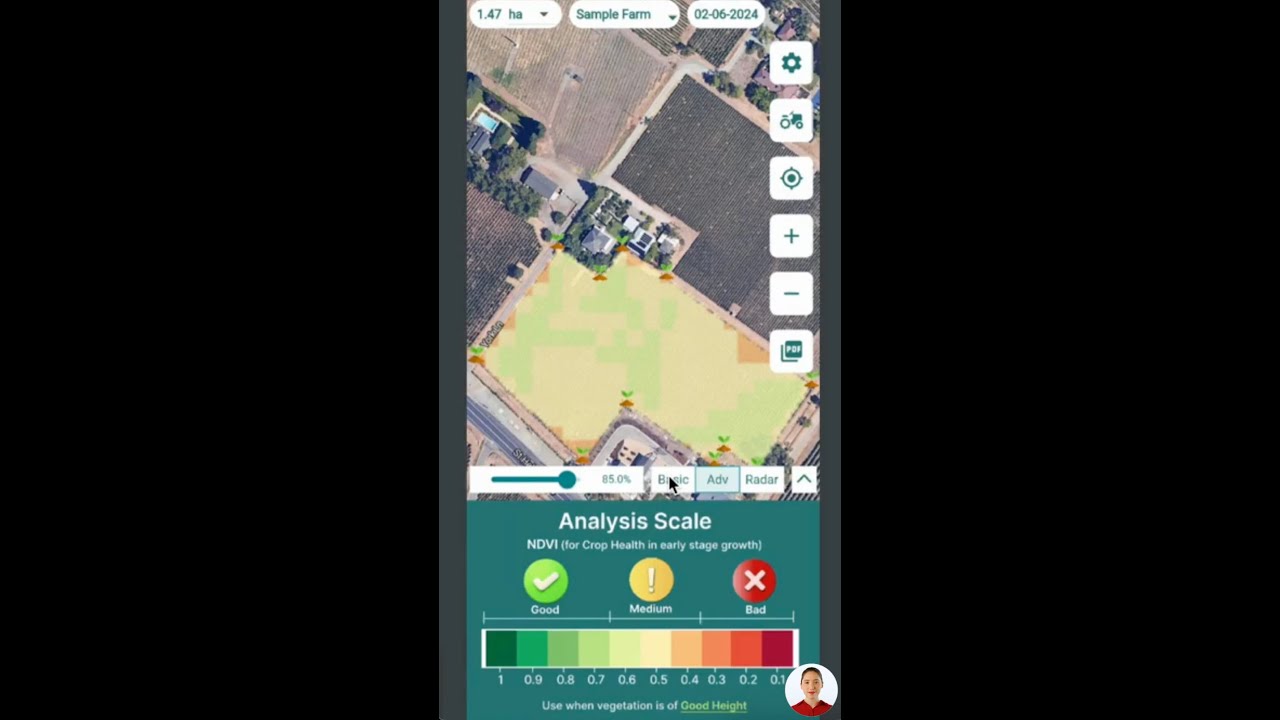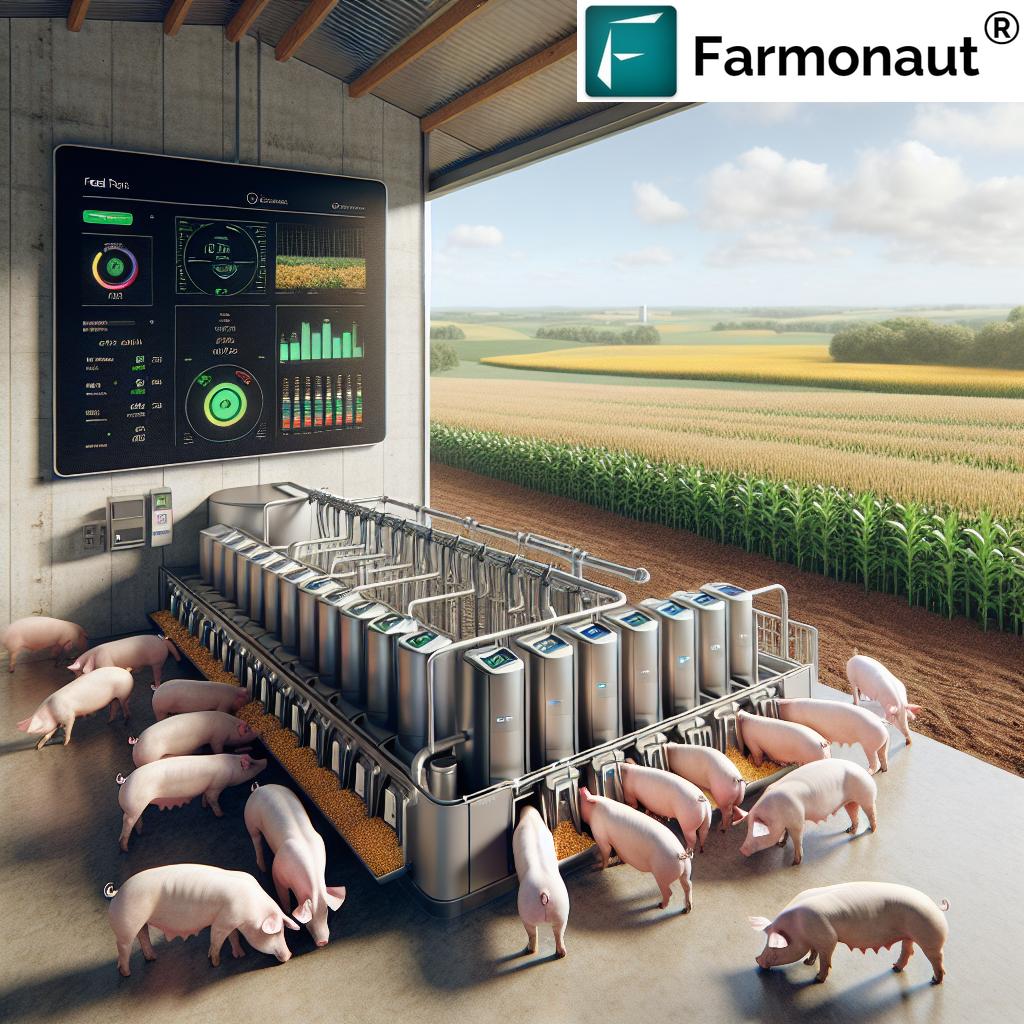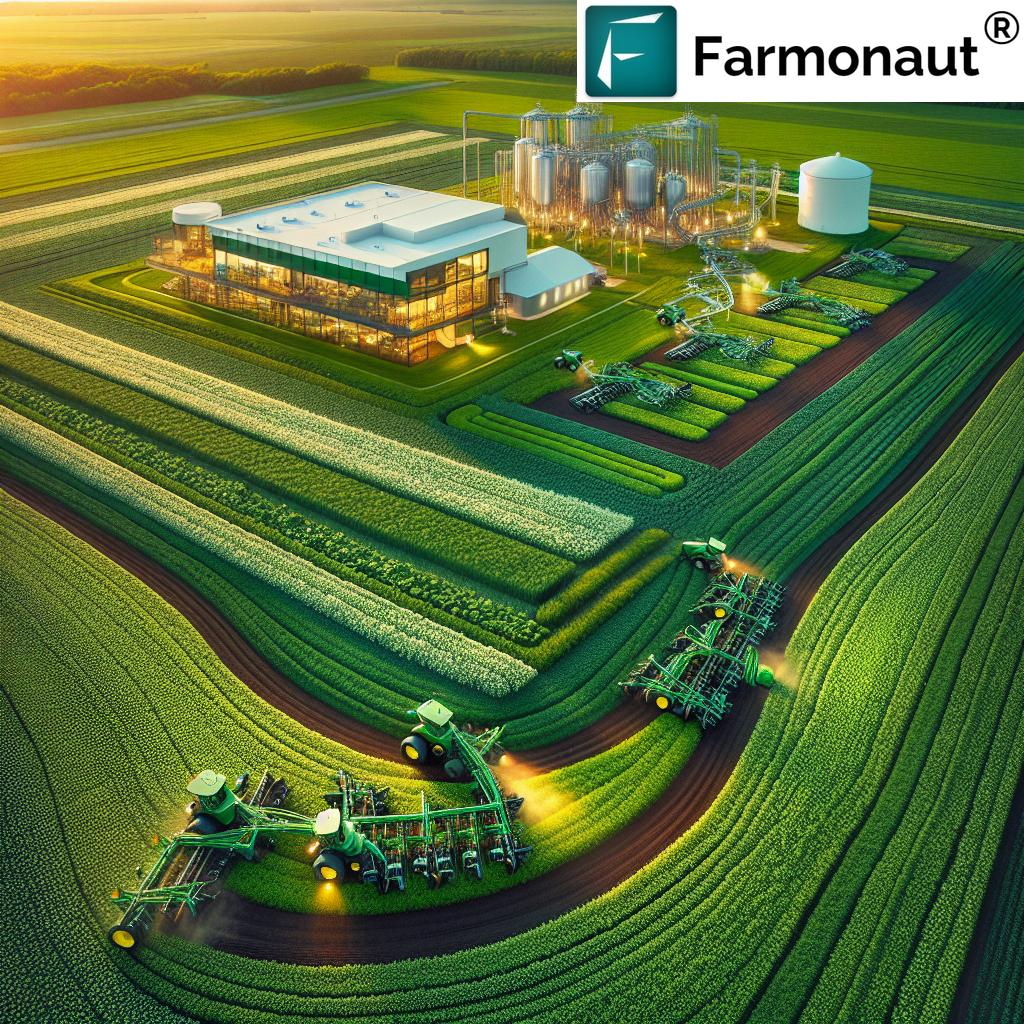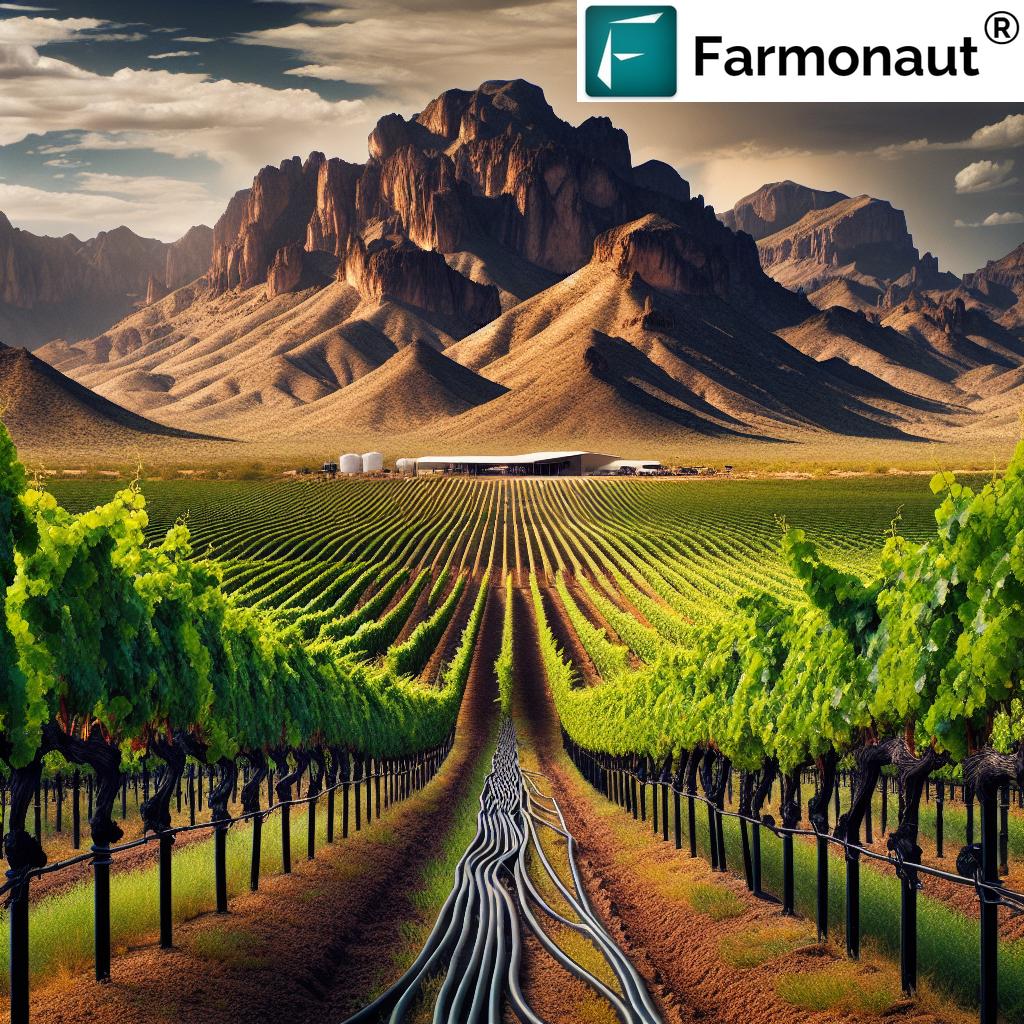Washington’s Agricultural Crisis: Drought Impact on Wheat Crops and Water Supply Outlook

“Washington’s 2015 drought caused substantial revenue losses across agricultural sectors, mirroring current climate conditions.”
As we delve into the current agricultural crisis facing Washington state, it’s crucial to understand the far-reaching impacts of drought conditions on our vital wheat crops and water supply. In this comprehensive analysis, we’ll explore the challenges faced by farmers, the potential consequences for the state’s economy, and the strategies being employed to mitigate these issues.
The Looming Water Crisis in Washington
The Washington State Department of Ecology and the Department of Agriculture have raised significant concerns about the potential for another drought year. This worry stems from an autumn with minimal rainfall and a winter characterized by insufficient snowpack. As we move forward, the statewide declared drought is expected to persist at least until April, affecting both personal and agricultural water usage.
The Office of the Washington State Climatologist has provided a sobering summary of the current water supply and climate conditions. Their report indicates that mean December temperatures were significantly above normal across Washington. While December did experience higher-than-normal precipitation, it’s important to note that snowpack melt is the critical factor in maintaining higher water supply during dry months.
The Snowpack Dilemma
The agriculture department has emphasized the devastating impact of high temperatures that cause winter precipitation to fall as rain rather than snow. This scenario mirrors the conditions experienced in 2015 when reduced snowpack led to diminished runoff to feed rivers and lakes, causing significant hardship for water users throughout the state, including agricultural producers.
The National Integrated Drought Information System has predicted a continued ‘D1’ drought in the Central Cascades and Yakima Basin. Additionally, new abnormally dry conditions are expected across the westside, Olympics, and in the far northeast and southeast regions of the state.
Potential Economic Impact
While it’s still early for definitive predictions, officials are concerned that Washington could face conditions similar to those of 2015. That year saw estimated total gross revenue losses ranging from $633 million to $773 million across various agricultural sectors. It’s crucial to note that the impacts of the 2015 drought were not limited to specific crops or regions, affecting the entire agricultural landscape of Washington.
“Pacific Northwest’s soft white wheat crop is expected to see a 10.5% decrease in ending stocks due to drought.”
Wheat Farmers in the Crosshairs
Wheat, the primary crop produced by farmers in Cheney and across Whitman County, is expected to be significantly affected by the drought conditions. The International Grains Commission has predicted that global wheat ending stocks will reach their lowest point in six years by the end of 2024-5. For the Pacific Northwest, the outlook is particularly concerning, with U.S. Soft White Wheat stocks projected to decrease by approximately 10.5%.
While this may impact local farmers, it’s worth noting that the U.S. is forecast to harvest fewer wheat acres in 2025 compared to 2024. Despite these challenges, the grain commission predicts no dramatic price shifts for consumers unless there are significant changes in the world balance sheet.
Beyond Wheat: Widespread Drought Effects
The impact of the drought extends far beyond wheat production. Water prices across Spokane County are rising due to a combination of factors, including inflation, industry changes, and the ongoing drought conditions. This increase in water costs adds another layer of complexity to the challenges faced by farmers and residents alike.
Climate Change and Washington’s Agriculture
The current situation in Washington is a stark reminder of the ongoing impacts of climate change on agriculture. The increasing frequency and severity of drought conditions pose significant challenges to farmers and water managers across the state. As we face these challenges, it’s crucial to explore innovative solutions and adapt our agricultural practices to ensure long-term sustainability.
Water Conservation Strategies
In light of the ongoing drought conditions, water conservation has become more critical than ever for Washington’s agricultural sector. Farmers are increasingly turning to advanced irrigation techniques and drought-resistant crop varieties to maximize water efficiency. Some key strategies include:
- Drip irrigation systems
- Precision agriculture techniques
- Soil moisture monitoring
- Cover cropping to improve soil water retention
- Crop rotation to optimize water use
Leveraging Technology for Water Management
Advanced technologies are playing a crucial role in helping farmers manage water resources more effectively. Satellite-based monitoring systems, like those offered by Farmonaut, provide real-time data on crop health and soil moisture levels. This information allows farmers to make informed decisions about irrigation and resource allocation, ultimately leading to more efficient water use.
Farmonaut’s API offers developers and businesses access to valuable satellite and weather data, enabling the integration of these insights into various agricultural management systems.
Drought-Resistant Farming Techniques
As climate conditions continue to challenge traditional farming methods, the adoption of drought-resistant techniques has become increasingly important. Some key approaches include:
- No-till farming to improve soil structure and water retention
- Use of drought-tolerant crop varieties
- Implementation of conservation agriculture practices
- Agroforestry to improve water retention and reduce evaporation
- Mulching to conserve soil moisture
Washington State Water Management
The ongoing drought crisis has highlighted the need for comprehensive water management strategies at the state level. Washington’s Department of Ecology is working closely with various stakeholders to develop and implement sustainable water management practices. These efforts include:
- Improving water storage infrastructure
- Enhancing water rights management
- Promoting water markets and banking
- Implementing watershed planning initiatives
- Encouraging collaboration between urban and rural water users
Collaborative Approaches to Water Conservation
Addressing Washington’s water supply challenges requires a collaborative effort between farmers, government agencies, and technology providers. By working together, we can develop innovative solutions that balance the needs of agriculture with environmental conservation.
Climate Change and Crop Yields in Washington
The impact of climate change on crop yields in Washington is a growing concern for farmers and policymakers alike. As temperatures rise and precipitation patterns shift, we’re likely to see significant changes in crop productivity across the state. Some potential impacts include:
- Shifts in suitable growing regions for certain crops
- Increased risk of heat stress and drought damage
- Changes in pest and disease patterns
- Alterations in crop phenology and growing seasons
- Potential yield reductions in some crops and possible increases in others
Adapting to Changing Climate Conditions
To address these challenges, Washington’s agricultural sector is focusing on adaptability and resilience. This includes:
- Investing in research on climate-resilient crop varieties
- Implementing advanced weather forecasting and early warning systems
- Developing flexible crop management strategies
- Exploring new crop opportunities suited to changing conditions
- Enhancing soil health to improve crop resilience
The Role of Technology in Agricultural Drought Mitigation
As we face increasingly challenging climate conditions, technology plays a crucial role in helping farmers adapt and thrive. Advanced agricultural technologies offer powerful tools for drought mitigation and efficient resource management. Some key technological solutions include:
- Satellite-based crop monitoring systems
- AI-driven advisory services for farm management
- IoT sensors for real-time soil moisture and weather data
- Precision irrigation systems
- Big data analytics for predictive modeling and decision support
Harnessing Satellite Technology for Agriculture
Satellite-based solutions, such as those provided by Farmonaut, offer farmers unprecedented insights into their crops and growing conditions. These technologies allow for:
- Real-time monitoring of crop health using vegetation indices like NDVI
- Early detection of stress factors, including drought and pest infestations
- Optimization of irrigation schedules based on actual crop needs
- Improved resource allocation and farm management decisions
Washington Drought Impact Comparison
| Impact Factors | 2015 Drought | Current Drought (Estimated) |
|---|---|---|
| Wheat Crop Yield (bushels/acre) | 71.0 | 65.5 (projected) |
| Soft White Wheat Ending Stocks (million bushels) | 95.4 | 85.4 (projected) |
| Water Supply in Yakima Basin (% of normal) | 47% | 55% (estimated) |
| Snowpack in Cascades (% of normal) | 22% | 35% (current) |
| Average Temperature (°F above normal) | 4.5°F | 3.8°F (current) |
| Agricultural Revenue Loss ($ millions) | 633-773 | 500-650 (projected) |
| Water Conservation Measures Implemented (scale 1-10) | 7 | 8 (estimated) |
Looking Ahead: Sustainable Agriculture in Washington
As we navigate the challenges posed by drought and changing climate conditions, it’s clear that the future of agriculture in Washington will require innovation, adaptability, and a commitment to sustainability. By embracing advanced technologies, implementing water-efficient practices, and fostering collaboration between stakeholders, we can build a more resilient agricultural sector capable of thriving in the face of environmental challenges.
The current crisis serves as a call to action for farmers, policymakers, and technology providers to work together in developing comprehensive solutions that address both immediate concerns and long-term sustainability goals. By leveraging the power of data-driven insights and innovative farming techniques, we can ensure that Washington’s agricultural sector remains strong and productive for generations to come.
Earn With Farmonaut: Affiliate Program
Earn 20% recurring commission with Farmonaut’s affiliate program by sharing your promo code and helping farmers save 10%. Onboard 10 Elite farmers monthly to earn a minimum of $148,000 annually—start now and grow your income!
Farmonaut Subscriptions
FAQ Section
Q: How severe is the current drought situation in Washington compared to 2015?
A: While the current drought conditions are concerning, they are not yet as severe as those experienced in 2015. However, officials warn that the situation could deteriorate if current trends continue, potentially leading to similar impacts on agriculture and water resources.
Q: What crops are most at risk due to the drought conditions?
A: Wheat crops, particularly in areas like Cheney and Whitman County, are at significant risk. However, the drought’s impact extends to various crops across the state, affecting the entire agricultural sector.
Q: How can farmers mitigate the effects of drought on their crops?
A: Farmers can implement various strategies, including adopting drought-resistant crop varieties, implementing efficient irrigation systems, using soil moisture monitoring technologies, and leveraging satellite-based crop monitoring tools like those offered by Farmonaut.
Q: What role does snowpack play in Washington’s water supply?
A: Snowpack is crucial for Washington’s water supply, especially during dry months. It acts as a natural reservoir, slowly releasing water as it melts, feeding rivers and lakes throughout the year.
Q: How is climate change affecting agriculture in Washington?
A: Climate change is leading to more frequent and severe droughts, changing precipitation patterns, and rising temperatures. These factors are altering growing seasons, crop suitability, and water availability, presenting significant challenges for the agricultural sector.

As we conclude our analysis of Washington’s agricultural crisis and the impacts of drought on wheat crops and water supply, it’s clear that the challenges ahead are significant. However, with innovative technologies, sustainable practices, and collaborative efforts, we can work towards a more resilient and adaptive agricultural future for the state. By staying informed and proactive, farmers, policymakers, and communities can come together to address these pressing issues and ensure the long-term viability of Washington’s vital agricultural sector.

















